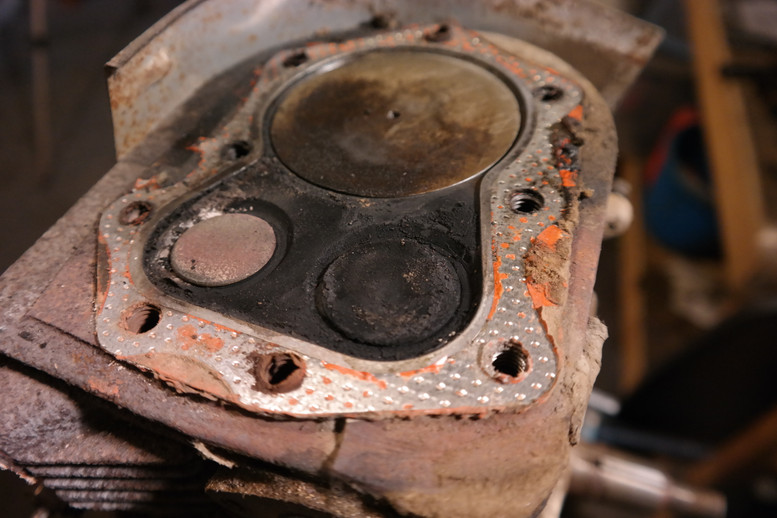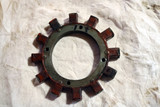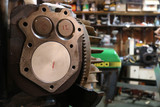The Troubleshooting Mindset
The Troubleshooting Mindset as Published in Lawn and Garden Tractor Magazine by iSaveTractors
Repairing issues on your tractor can be frustrating, and costly. My business, iSaveTractors.com receives about 400 – 500 calls per month relating to technical issues with Garden Tractors and their engines.
In this issue, instead of writing an article on how something works, I want to share with you my thoughts regarding troubleshooting techniques and mindset.
When faced with a problem, it’s easy to make assumptions; buy parts, and install; only to find your problem still exists.
Here’s how you can become a better tractor mechanic.
The Troubleshooting Mindset
What makes a good mechanic? It comes down to how you think. Anyone can install parts, but not anyone can systematically identify and solve problems on complex equipment.
Here’s how to develop a sharp troubleshooting mindset:
Never Make Assumptions
So your tractor lost spark. You purchased a new ignition coil. After you installed it you still don’t have spark. What happened? We will go into this common problem later in the article, but for now remember never make assumptions. Always look for evidence that suggests a cause. Evidence comes in many forms such as smoke coming from your engine, metal particles in your oil, and oil leaks from your transmission.
Break it Down
I love the old quote, “How do you eat an elephant? One bite at a time.” If your engine is running poorly it could be caused by several problems. It’s best to break your problem down into separate systems and work through each system individually.
Think Systematically and Start from the Beginning
In our example of an engine having no spark, don’t just check and replace the ignition coil. Begin at the beginning of your ignition system and work your way through examining each component.
Have a Thorough Understanding of Your Equipment
Understanding how each component works on your tractor will help you efficiently identify and solve problems.
The iSaveTractors Approach to Troubleshooting
You’ve reminded yourself to never make assumptions, break problems down to manageable portions, think systematically, and understand how everything works. You’re now ready for some actual trouble shooting techniques.
Break down your machine into separate systems and subsystems:
- Engine
- Ignition, Charging, Starting, Accessories, Compression, Air, Fuel,
- Transmission
- Transmission, Differential, Drive Shaft
- Linkages and Controls
- Brakes, Steering, Pedals, Control Cables
- Wheels and Tires
In the case of an engine related issue such as our “no spark” example mentioned earlier, we can easily identify this as an engine issue. We can then further break it down to a subsystem: ignition. That leaves us with the following components:
- Battery, Wiring, Safety Switches, Key Switch, Ignition Coil, Points, Condenser, Spark Plug Wire, Spark Plug, and Camshaft
A “No Spark” failure can be caused by any or many of the components in your ignition system. It’s important we work through the cause by beginning at the first component of the system and go through to the end.
Subsystem Check List:
- Battery – Check charge. Check battery health under load with a load tester.
- Inspect wiring for broken insulation, loose connections, and damaged wires
- Inspect safety switches for proper function
- Inspect key switch for correct operation in all positions
- Check ignition coil primary and secondary windings
- Check condenser for correct installation and function
- Check ignition contact points and gap setting
- Check Spark Plug Cable Resistance
- Check Spark Plug
Save the more difficult checks such as camshaft condition, for the very end if your problem persists.
The same troubleshooting method applies to more broad problems such as a poor running engine. You may find yourself checking many of the sub systems in your engine. In this case start with the more-likely sub systems and work your way to the less likely. Here is a checklist:
The Poor Running Engine
More Likely:
- Air
- Check Air Filter condition
- Fuel
- Check fuel tank and fuel for water contamination, debris, clogged filters, fuel pumps, and carburetor
- Linkages
- Check choke and throttle linkages
- Ignition
- Check ignition system components
- Compression
- Check valve clearance
Less Likely:
- Compression
- Check piston for wear
- Check condition of valve faces and sealing
- Check cylinder for wear
- Charging
- Check components in your charging system
When checking these subsystems keep an eye out for evidence suggesting trouble such as sludge or debris in fuel, missing or damaged air cleaner, score marks on top of piston and cylinder walls, and excessive carbon build up on the intake and exhaust valves. All of these give you valuable insight to your problem.
The above troubleshooting technique applies to every aspect of your tractor. I hope this helps you next time you encounter a problem that needs solving.
Thank you for saving the tractors,
- -Norman Ng, iSaveTractors.com
Recent Posts
-
Engine Science: Rewind Your Small Tractor Engine Stator - Charging System Repair
Engine Science: How to Rewind Your Statorby Norman Ng, Founder of iSaveTractorsYour engine’s stator …Sep 10th 2020 -
Engine Science: The Digital Multi-Meter
The ability to detect, observe, and measure electricity is crucial when trying to understand how a …May 7th 2019 -
5 Common Small Engine Rebuilding Mistakes
The engine is the heart of your garden tractor. When performing heart surgery on your tractor, be aw …Jan 4th 2019




